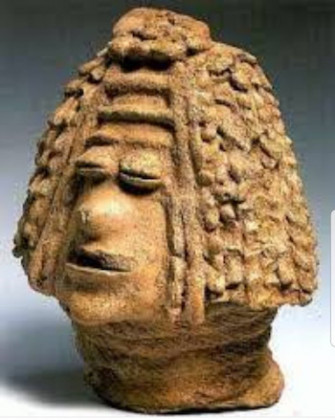KAMPALA, UGANDA: The ‘Luzira Head’, one of Uganda’s original artefacts held in the British Museum is still the property of Uganda, according to Samuel Kizaalwa the assistant commissioner of the museums.
Kizaalwa says that any time Uganda wants back its 1,000-year-old artefact, the government just needs to revise the agreements that loaned it to the British Museum and ask for its repatriation.
This is because, unlike many artefacts which were stolen by the colonialists from Africa, the ‘Luzira Head’ was just ‘loaned’ out to the British Museum in 1931 by E.J Wayland, a geologist at the Uganda Museum to be displayed in the British Museum’s ethnographic collection. He says there are existing agreements as to how it was loaned to the British with a clear way of returning it.
He says even the British Museum acknowledges that the artefact is a property of Uganda loaned to them. The Luzira Head or ‘Mpanga Head’ was found at Luzira, Uganda in 1929. It is one of the oldest Sub-Saharan in Africa. It is a unique bust of a woman made of fired clay, typically of a brownish-red colour and unglazed.
The head has very narrow, protruding eyes and a mouth with a diminutive nose. Along the forehead are three scars. The hair is matted and falls on either side of the head. The lower part of the figure was also found during the original excavations. It is tripod-shaped and like the head is hollow and made of baked clay.
According to the British Museum, The Luzira collection consists of a terracotta head and lower torso, about fourteen other broken terracotta pieces, and more than one hundred potsherds. It also includes objects such as an axe.
Analysis of the fragments suggests that there were possibly four figures originally, which were broken before being placed in a pit. The associated ceramics and part of a polished stone axe suggest that the site was occupied for a long period of a millennium until the 19th century.
The head is hollow and was probably completed separately from the body. The decoration and all the features were applied rather than being modelled on the figure. The applied clay on the head represents either a wig or more probably hair dressed in clay, a not uncommon practice among priests or other ritual practitioners. Below the head, there are five coils, which could possibly indicate a necklace of some kind, though probably not of beads.
At the Uganda Museum, there is a replica of this artefact as a reminder that the original artefact is away. Kizaalwa says that the government has held bilateral talks with some countries like the UK to return such artefacts and says that the next point of discussion shall be how to return the artefacts.
However, according to Kizaalwa, the museum has no compiled record of any artefacts stolen from Uganda. Despite this, there are efforts by the Bunyoro Kitara kingdom to reclaim 279 cultural artefacts that were taken from Bunyoro during the colonial period by Col Henry Colville in 1894 when he was the commissioner and consul general of the Queen of Great Britain in Uganda.
They include Omukama Kabalega’s throne, vessels, ornaments, medical equipment, and baskets. These items have been confirmed to exist among collections at Pitt Rivers Museum at the University of Oxford in the UK in the “most important” category of collections at the museum.
Nabukalu Solome Nansubuga an official at the museum says that the museum has the ability to conserve all artefacts as it is keeping collections from as far as 1908 and they are still well preserved. These are kept in airtight glass containers where regulation of temperature and humidity is done plus keeping them away from pests.
Thousands if not millions of artefacts were robbed from Africa by the colonialists. Some of the objects were acquired through looting during military expeditions. Others, according to the report, were collected by “civilians, colonial administrators and scientific experts” with the encouragement of the colonial governments.
Of these, the Benin bronzes, considered among Africa’s greatest treasures, are the most popular. Thousands of these were looted by British soldiers in 1897 from the ancient Kingdom of Benin, in what is now modern-day Nigeria.
Around 200 ended up at the British Museum in London, while the rest were divided up between a variety of Western collections, including museums in Germany. In February 2022 two of these were returned with promises of returning more to where they rightfully belong.
Among the priceless works held by Germany’s new Humboldt Forum museum, a massive cultural complex in Berlin, are 75,000 African artefacts. It’s not clear how some of these objects made their way into German hands during the colonial era.
In 2018, the University of Cambridge Museum of Archaeology and Anthropology in England pledged to return the historic artefacts donated to them by the late British anthropologist and missionary Rev John Roscoe.
Roscoe (1861–1932), who was a missionary from the Anglican Missionary Society in East Africa collected the different items. A team funded by the Andrew Mellon Foundation would study and return the artefacts for further study in Uganda by the end of 2022.
If you would like your article/opinion to be published on Uganda’s most authoritative news platform, send your submission on: [email protected]. You can also follow DailyExpress on WhatsApp and on Twitter (X) for realtime updates.



